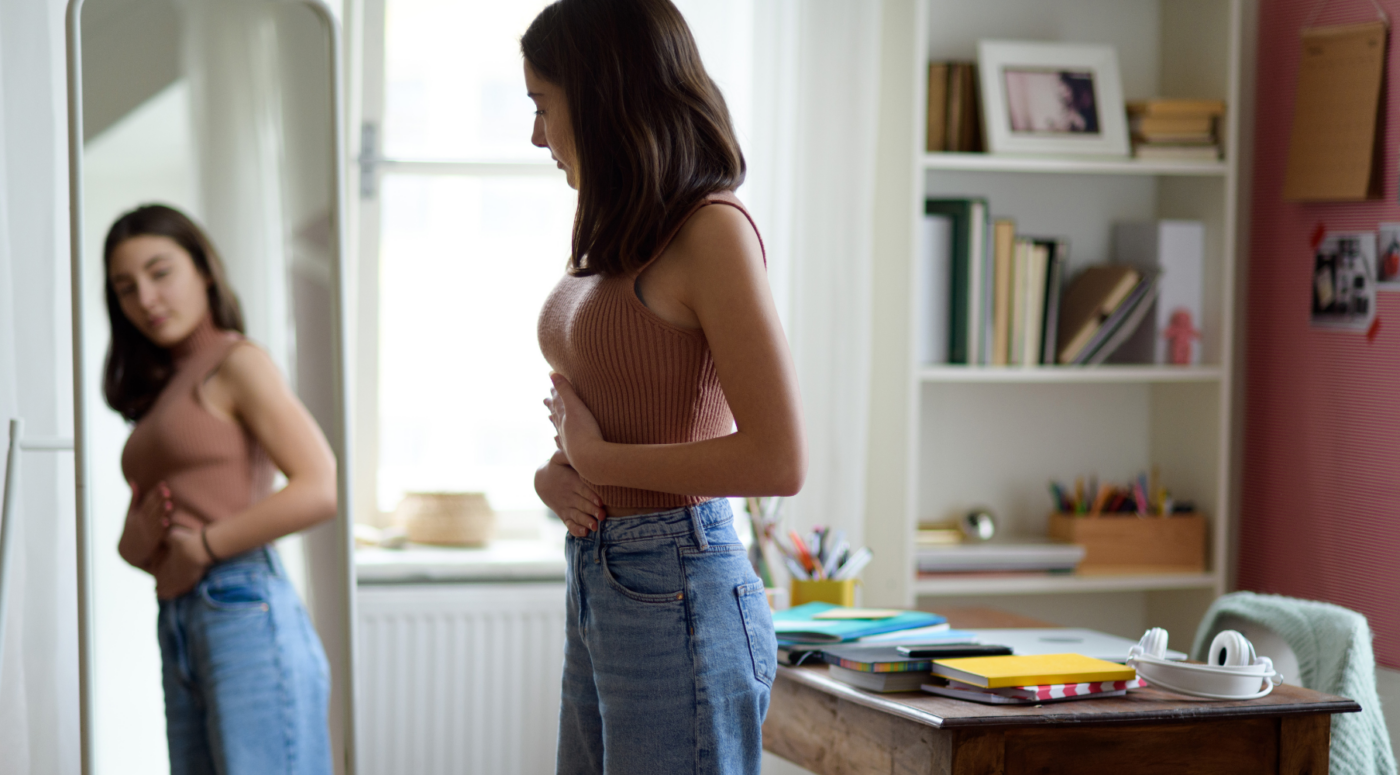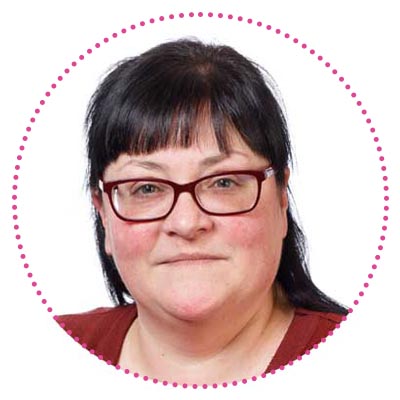Advice For Schools, Mental Health
Body Image and Self-Esteem – How Can We Support Young People When We Don’t Always Feel Good About Ourselves?
This blog will look at current issues around body image and self-esteem and the significant impact this can have on all members of society – particularly the children and young people we work with.
In 2022, the House of Commons ordered a report into the impact of body image on both mental and physical health and what they found was quite eye-opening.
According to their research, 80% of people agreed or strongly agreed that their body image had a negative impact on their mental health, and 61% said body image negatively impacted their physical health. To put this into context, this suggests that roughly 24 children in a class of 30 could potentially feel negatively about the way they look.
With this in mind, I’ve put together a guide explaining what body image really means and how we can help address the challenge.
What Does Body Image Mean?
Body image is essentially how we see ourselves. It’s the thoughts and feelings we have about the way we look and our appearances and can be linked to how we feel others see us.
Body image is a combination of:
- Our perceptions – This is how we believe we look, which may or may not be entirely accurate compared to reality.
- Our thoughts – These are the things that go through our minds about our bodies – often embodying our insecurities such as, “I have a big nose” or “I’m too skinny”.
- Our feelings – These are the associated emotions we have when we look at ourselves or think about our bodies such as confidence and pride or shame and insecurity.
A significant proportion of the UK population struggles with body image, but before we look at why these issues are so prevalent, we need to understand where they come from.
Issues with body image can stem from any number of sources and can be something people experience from time to time, or something we feel constantly.
Many different factors can influence how we see ourselves, including:
- The media and what we see online
- People we experience in our everyday lives
- Societal norms and expectations and cultural beauty standards
As humans, we are constantly bombarded with images of celebrities, supermodels and other ‘attractive’ people, which can make us feel inferior or less attractive, and as a result, impacting our self-esteem and self-confidence.
Why Are Body Image Issues So Prevalent in Children and Young People?
We know that childhood and our teen years are all about discovering who we are. From your fashion sense to your musical taste, it’s a period of self-discovery and understanding who you are as a person. But this experimental and vulnerable time can be overshadowed by other expectations from society, the media, the internet and social pressures, which can make it very difficult for young people to express themselves without the judgement of others.
Young people face so many different pressures and in this world of technology, these pressures are then exacerbated by social media and what see online, day in and day out. Research taken from the Body Image Survey
Results published by the House of Commons revealed that 40% of teenagers said images on social media caused them to worry about their body image.
The media often portrays unrealistic and heavily edited images promoting a very narrow and often unachievable definition of beauty. Constant exposure to this can create feelings of inadequacy and dissatisfaction for young people who don’t see themselves reflected in what they see.
65% of under-18s believe there’s an “ideal” body type and the lack of diverse body types and ethnicities represented in media and advertising can make young people feel invisible or excluded, negatively impacting their self-image. If children and young people don’t see themselves represented across what is seen as ‘ideal bodies’, this can heavily impact their mental health and own self-worth with some taking drastic or even dangerous actions to change the way they look.
Overall, the constant barrage of unrealistic beauty standards, combined with social pressures and a lack of body positivity, creates a challenging environment for young people to develop a healthy body image.
What Can We Do to Promote and Improve a Healthy Body Image?
As educators, we have a responsibility to promote a healthy body image and to support children to develop their own self-esteem and self-worth, as well as their resilience.
Here are some top tips for supporting children to like the way they look and encourage others to do the same.
- Focus on function, not form – We need to focus on and celebrate what bodies can do! Encourage discussions that highlight strength, movement, and the joy of being in a healthy body.
- Challenge the media narrative – Create opportunities to discuss unrealistic portrayals in media with the children. When discussing body image, make sure they understand about editing and filters and how these are used to create unrealistic images.
- Body neutrality – Move beyond good or bad labels. Children need to be taught that our bodies are our homes and are vessels for experiencing life, not objects to be judged.
- Create a culture of open communication – Provide a safe space for young people to express their concerns about body image and teach adults to listen actively without judgement, using language to support self-esteem and resilience.
- Lead by example – Our own body image struggles can impact young people, so we need to be mindful of our own self-talk and ensure we project confidence and self-acceptance (even if we might not feel it).
How to Improve the Children’s and Our Own Self-Esteem?
Self-esteem is more than just feeling good about your looks. It’s about valuing yourself as a whole person. Here’s how we can support ourselves and our young people in this journey:
- Celebrate strengths and uniqueness – We need to ensure we focus on what makes each person special, their talents, and their positive qualities. Teaching children that they are not defined by what they look like.
- Practice positive reinforcement – Celebrate their effort, progress, and achievements in all areas of their lives, focusing on growth, development and effort – not just outcomes.
- Set realistic goals and celebrate milestones – Setting achievable goals builds confidence. Celebrate even small successes along the way.
- Practice self-compassion – We all have flaws, and that’s okay! Treat yourself and others with kindness and understanding. How can we expect others to listen to our affirming words if we don’t take heed ourselves?
Fostering Positive Body Image and Self-Esteem in Today’s World
Supporting healthy body image and self-esteem is a continuous process. As much as we would like to remove the negative influence of the media and technology, we can’t.
So, we need to teach children how to challenge what they see, speak up where needed and feel comfortable in their own skin.
By working together, creating open communication, and focusing on what truly matters, we can empower young people (and ourselves) to embrace their unique selves and thrive.
If you need any further support, our multi-award-winning organisation is here to help. Visit our Mental Health and Wellbeing page or get in touch to find out more.
About the Author
Lucie Welch has worked in the field of Primary Education for the last 15 years, holding the positions of Assistant Head of School, Designated Safeguarding Lead, Attendance Lead and Designated Teacher for Looked After Children. Through working across several local authorities and within multi-academy trusts, Lucie has garnered a passion for safeguarding and supporting children and young people to enable them to thrive.
At Services For Education, Lucie is an integral part of the Safeguarding team, sharing her expertise with schools, colleges, trusts, and other educational settings across the city of Birmingham and beyond. Dedicated to improving safeguarding practices in an actionable and impactful way, Lucie works closely with settings to provide bespoke training, supports with reflection on their own practices during Safeguarding audits and always strives to contribute to a better learning environment for all children. Through delivery of statutory training for DSLs and Safer Recruitment, Lucie works with colleagues in all age ranges and is a source of expertise within these areas.
Lucie also wears other important hats within the School Support Team. Not only is she dedicated to ensuring the safety and well-being of students through her role in safeguarding, but she also plays a key part in the PSHE/RSE and Health for Life teams. Additionally, Lucie partners with the Best Practice Network to deliver the Early Career Framework, supporting new teachers in their professional development.


 Lucie Welch – Adviser, Services For Education
Lucie Welch – Adviser, Services For Education Jo Perrin - Adviser, Services For Education
Jo Perrin - Adviser, Services For Education
 Marsha
Marsha 


